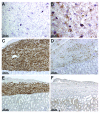Genetically engineered immune privileged Sertoli cells: A new road to cell based gene therapy
- PMID: 22553487
- PMCID: PMC3341243
- DOI: 10.4161/spmg.19119
Genetically engineered immune privileged Sertoli cells: A new road to cell based gene therapy
Abstract
Sertoli cells are immune privileged cells, important for controlling the immune response to male germ cells as well as maintaining the tolerogenic environment in the testis. Additionally, ectopic Sertoli cells have been shown to survive and protect co-grafted cells when transplanted across immunological barriers. The survival of ectopic Sertoli cells has led to the idea that they could be used in cell based gene therapy. In this review, we provide a brief overview of testis immune privilege and Sertoli cell transplantation, factors contributing to Sertoli cell immune privilege, the challenges faced by viral vector gene therapy, the use of immune privileged cells in cell based gene therapy and describe several recent studies on the use of genetically engineered Sertoli cells to provide continuous delivery of therapeutic proteins.
Figures




Similar articles
-
Therapeutic application of Sertoli cells for treatment of various diseases.Semin Cell Dev Biol. 2022 Jan;121:10-23. doi: 10.1016/j.semcdb.2021.04.007. Epub 2021 Apr 25. Semin Cell Dev Biol. 2022. PMID: 33910764 Review.
-
An overview of a Sertoli cell transplantation model to study testis morphogenesis and the role of the Sertoli cells in immune privilege.Environ Epigenet. 2017 Aug 3;3(3):dvx012. doi: 10.1093/eep/dvx012. eCollection 2017 Jul. Environ Epigenet. 2017. PMID: 29492314 Free PMC article. Review.
-
Testisimmune privilege - Assumptions versus facts.Anim Reprod. 2013 Jan;10(1):3-15. Anim Reprod. 2013. PMID: 25309630 Free PMC article.
-
Immunoprotective properties of primary Sertoli cells in mice: potential functional pathways that confer immune privilege.Biol Reprod. 2012 Jan 10;86(1):1-14. doi: 10.1095/biolreprod.110.089425. Print 2012 Jan. Biol Reprod. 2012. PMID: 21900683 Free PMC article.
-
Isolation of Sertoli Cells and Peritubular Cells from Rat Testes.J Vis Exp. 2016 Feb 8;(108):e53389. doi: 10.3791/53389. J Vis Exp. 2016. PMID: 26890157 Free PMC article.
Cited by
-
The Sertoli cell: one hundred fifty years of beauty and plasticity.Andrology. 2016 Mar;4(2):189-212. doi: 10.1111/andr.12165. Epub 2016 Feb 4. Andrology. 2016. PMID: 26846984 Free PMC article. Review.
-
Lentiviral transduction of rat Sertoli cells as a means to modify gene expression.Spermatogenesis. 2012 Oct 1;2(4):279-284. doi: 10.4161/spmg.22516. Spermatogenesis. 2012. PMID: 23248769 Free PMC article.
-
The use of deidentified organ donor testes for research.Andrology. 2025 Feb 6:10.1111/andr.70008. doi: 10.1111/andr.70008. Online ahead of print. Andrology. 2025. PMID: 39912553 Free PMC article. Review.
-
The apical ES-BTB-BM functional axis is an emerging target for toxicant-induced infertility.Trends Mol Med. 2013 Jul;19(7):396-405. doi: 10.1016/j.molmed.2013.03.006. Epub 2013 May 2. Trends Mol Med. 2013. PMID: 23643465 Free PMC article.
-
In Vitro Derivation of Functional Sertoli-Like Cells from Mouse Embryonic Stem Cells.Cell Transplant. 2018 Oct;27(10):1523-1534. doi: 10.1177/0963689718797053. Epub 2018 Sep 14. Cell Transplant. 2018. PMID: 30215278 Free PMC article.
References
Grants and funding
LinkOut - more resources
Full Text Sources
